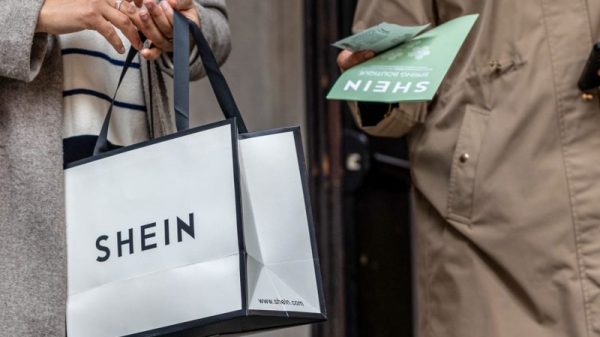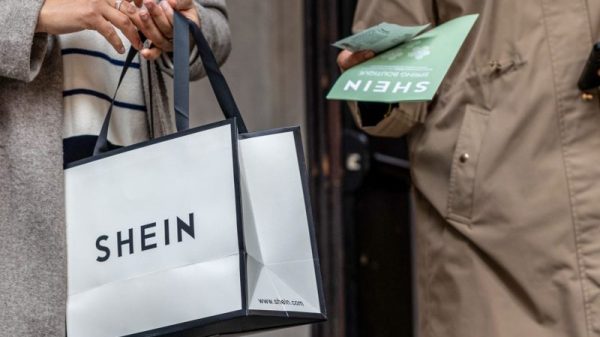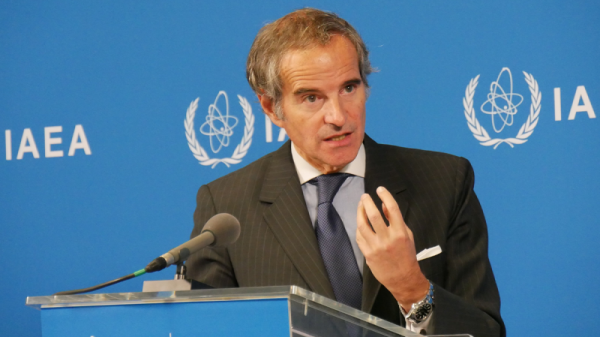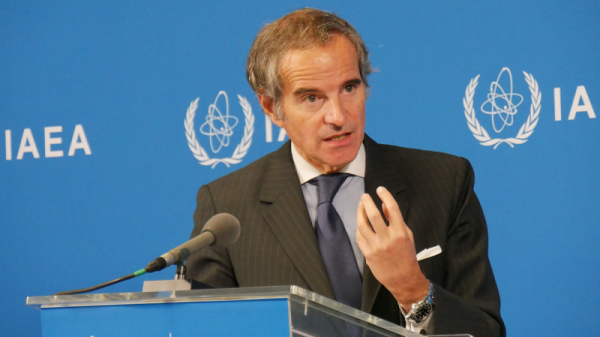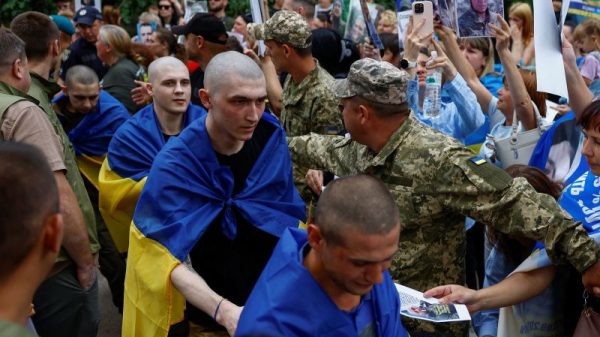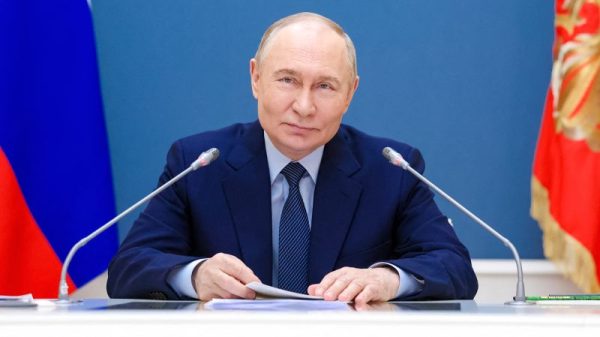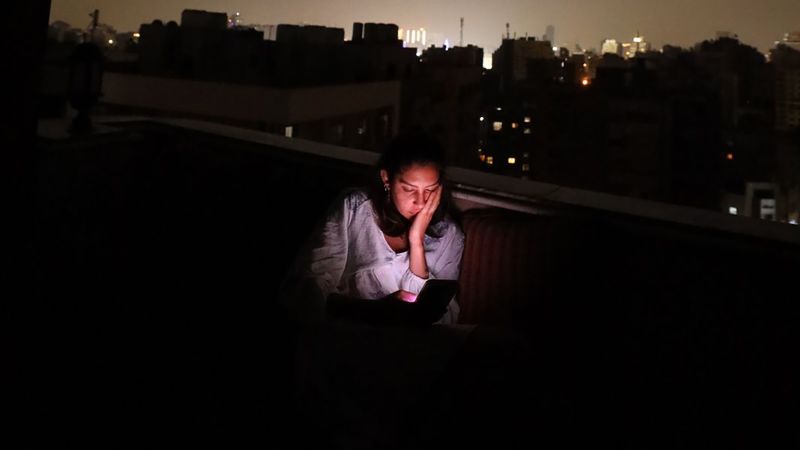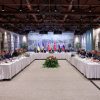Mirna El Helbawi sits on a Cairo rooftop, her face illuminated by the moonlight and a phone in her hands, as she texts a terrified father whose wife and children are trapped in Gaza.
“I don’t want a single thing from this world right now,” he writes to her in Arabic, “except to be able to talk to them, even if it’s for the last time, let me tell them goodbye.”
El Helbawi, more than 200 miles away, can’t shield his family from the Israeli missiles raining down. But she can provide them with the chance to say one more “I love you.”
The Egyptian writer and activist is the founder of Connecting Gaza, a grassroots initiative that uses eSIMs – or virtual SIM cards – to help Palestinians skirt telecommunication blackouts amid Israeli airstrikes across the territory.
El Helbawi, along with a small group of volunteers and a legion of international donors, says they’ve restored telephone and internet connection to more than 200,000 Palestinians in Gaza, and will continue the effort until the devastating war between Israel and Hamas is over.
“After all this pain, they can’t even share their grief with the world or scream for people to demand a ceasefire. They have to endure bombardment and attacks in absolute silence,” El Helbawi said.
“It’s like being murdered while someone is putting a hand over your mouth, so you can’t even scream for help.”
Gaza falls silent
El Helbawi, like millions of others, has been anxiously watching the war unfold since October 7, when Hamas launched a brazen attack in Israel, killing 1,200 people and taking more than 240 others hostage.
Israel responded by imposing a siege and launching deadly airstrikes across Gaza, destroying homes, schools and hospitals in the densely populated territory. An estimated 15,200 Palestinians, 70% of whom are women and children, have so far been killed in the attacks, and 40,000 others wounded, according to the Palestinian Ministry of Health, which draws its figures from sources in Hamas-run Gaza.
Almost immediately, telecommunication services experienced disruptions. Israel cut electricity to the territory and service providers said the bombardment destroyed vital network infrastructure. Some Palestinians were still able to make telephone calls and access the internet, but connection was spotty.
For weeks, El Helbawi followed the news closely. Images and videos posted on social media broke her heart – entire neighborhoods reduced to rubble; doctors struggling to treat patients without medicine; parents mourning the deaths of their children.
Then on October 27, as Israel prepared to expand its ground operations, Gaza fell silent.
“We regret to announce a complete disruption of all communication and internet services with the Gaza Strip in light of the ongoing aggression,” Paltel, the leading telecommunication company in the Palestinian territories, said in a statement. It was the first of several blackouts to strike Gaza.
Fearful that a blackout could provide cover for “war crimes,” El Helbawi became consumed with finding a solution.
At first, she joined others on social media platform X, calling for Elon Musk to deliver his Starlink satellite internet service to Gaza – and was excited when Musk said he would. But when talks on those plans stalled, El Helbawi decided to try something else.
At the suggestion of a social media follower, she purchased an eSIM with roaming service and had a friend try to connect to a foreign network. To her surprise, it worked.
“I felt it in my whole body the moment we realized there was hope – even if it was very small hope – that we found a solution,” El Helbawi said. “It was the light at the end of a very dark tunnel.”
Within 24 hours, she posted on X and Instagram asking followers who wanted to help restore telephone and internet for Palestinians to donate eSIMs by purchasing them online and sending her the QR codes. El Helbawi felt confident she could find people in Gaza with service to distribute the eSIMs throughout the territory.
Giving voice to victims
As El Helbawi began executing her plan, Ahmed Elmadhoun was in Gaza struggling with how to report on the war without telephone or internet service.
As one of the few journalists on the ground, Elmadhoun felt obligated to keep the world informed of the latest news, sharing photos and videos of the aftermath on social media.
He also worried about his family, who were displaced throughout Gaza and could not be reached. More than 40 of his relatives were killed in airstrikes, Elmadhoun says.
“Gaza was incredibly isolated, with only fear present. We were alone, very alone,” he said. “We couldn’t reach our families or inquire about them, and the airstrikes were incredibly intense. Even the ambulance and emergency teams couldn’t determine the locations of the bombings or reach the injured.”
Amid his fears, Elmadhoun managed to access the internet using an Israeli SIM card before it was blocked. In that time, he posted on X asking: “Someone told me about an eSIM – who?”
Minutes later, El Helbawi saw his question and responded: “Me! Me! Me! Send me a message urgently.”
El Helbawi quickly gave Elmadhoun an eSIM QR code and helped reconnect him to the internet, making him the first person in Gaza to get one.
At that moment, Connecting Gaza was born.
The solution goes viral
News of the initiative quickly spread on social media, with concerned people from all over the world buying and donating eSIMs.
Donors have sent QR codes from as far as the United States, Switzerland, Pakistan and the Netherlands, El Helbawi says. Most buy them on mobile apps like Simly and Airalo, which allow donors to see when the eSIMs are activated and top them off when funds run low.
Graeme Bradley, a donor from Scotland, says he was drawn to the initiative because it’s an easy way to have a big impact on a conflict where so many lives are at stake.
By helping Palestinians tell their stories, he hopes they’ll be able to “turn public opinion and pressure world leaders to call for a ceasefire.”
But not everyone who gets an eSIM lives long enough to tell their story.
Noha Elkomi, a 25-year-old donor from Egypt, says she excitedly watched on her app as a Palestinian activated the eSIM she donated. But when it fell inactive, her heart sank.
She shared her concerns with El Helbawi, who told her, “You never know what happens,” Elkomi recalled.
“I understood what she said. Maybe the first one who took it is gone. Maybe they got killed. This is the reality of it, as sad as it is. Every minute counts and you don’t know how long they are staying,” Elkomi said.
An eSIM can only be activated once, and it can go inactive depending on where in Gaza the person is trying to connect. If they move to an area with weaker signal, the eSIM might not work.
“This gave me a little bit of hope but at the same time it made me start imagining, what would the person be going through? Where are they now?” Elkomi said. “… I started feeling as if I know them personally.”
The first eSIM she donated eventually lost signal altogether, Elkomi says, but she won’t stop giving more. Days later, tears streamed from Elkomi’s eyes as she saw her second eSIM go online and connect another person in Gaza.
“I will say that regardless of what stops in front of them, they (Palestinians) find a way to go around it or climb on top of it or to break through it and continue thriving and this is what they want to show the world,” Elkomi said. “The blackout was, yes, some darkness, but there’s always going to be light shining through the darkness.”
‘This is humanity’
El Helbawi admits she’s obsessed with Connecting Gaza. It’s the first thing she thinks about in the morning and the last thing at night.
“We barely sleep, connecting eSIMs is our first priority in life,” she said. “Even though I feel like I’m doing something big for Gaza, I can never stop feeling that still we are not doing enough.”
To date, an estimated $1.3 million worth of eSIMs have been donated to Connecting Gaza for distribution, according to El Helbawi. The initiative, which partnered with Simly for a time, connects more than 1,000 Palestinians daily, and each person can turn a phone into a hotspot for five others, she says.
Connecting Gaza has been so successful that El Helbawi recently leveraged her growing social media following into a nonprofit organization called Connecting Humanity, through which she hopes to reconnect vulnerable people in other conflict zones.
“The eSIMs are not cheap. To know that so many people are spending their time and money to help says so much about the solidarity the world has with Palestine,” El Helbawi said. “Some people donate eSIMs and then wait for their next paychecks to send another. They do this to save someone’s life. This is humanity.”
The war has significantly changed since the first blackout. There was a short-lived truce, some hostages released, and more aid allowed to enter Gaza. But the violence has resumed and more than a million Palestinians remain displaced, their homes destroyed, little access to health care, food, clean water or electricity – and no means of escape.
The grief and isolation Palestinians feel is compounded by the frequent blackouts, Elmadhoun says: “What’s happening in Gaza is a massacre. There’s no safe place…and we feel like we are alone.”
But El Helbawi, along with thousands of donors across the world, says she refuses to let Palestinians suffer in silence.
“We are sending a message to Palestinians,” she said. “We do not stand for this. We will not let you lose your connection with the world.”








